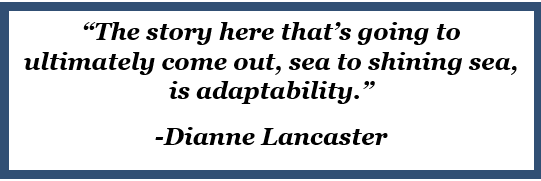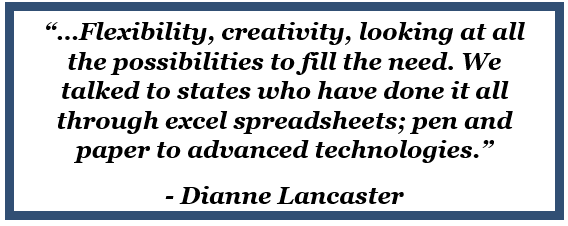
Warehousing: What You Need to Know
February 2, 2021
Warehousing is shifting under the public procurement spotlight. Are you up to speed?
Moving Forward

Warehousing is the storage of goods and raw materials, parts, or finished products to be distributed by an organization or government.
So, why are we talking about it to procurement officials?
Procurement is a crucial part of supply chain management. Now, procurement officers must think of the entire supply chain, moving beyond just purchasing and into the logistics of making those purchases happen. Market research, the supply chain of the finished good or services, and knowledge of the manufacturing or inventory style of JIC and JIT all affect the bottom-line purchase.
To start thinking big on warehousing, you can read the federal General Service Administration’s (GSA) Warehouse Asset Best Practices.
By nature of the profession, procurement officials are no strangers to warehousing; a part of contract closeout addresses how to manage unused, obsolete, or excess property, so the concept is familiar.
Appendix A of NASPO’s Emergency Preparedness Guide shows the relationship between National Incident Management System (NIMS), the National Response Framework (NRF), and the Continuity of State Operations (COSO). It is no surprise the procurement unit is housed close to the logistics unit.
Just-in-time & Just-in-case
In May of 2019, Supply Chain Management Review warned of the perfect storm approaching the warehousing industry. Strained wages, capacity, and international tariffs were pressuring warehousing and logistics into a new age of innovation. As suppliers continued to cut supply chain costs, the result was further leaning-out supply chains.
Then in 2020, the COVID-19 pandemic hit, and the supply chain world asks, did Just-in-time go too far?
Since the 1970s, logistics and warehousing have focused on Just-in-time inventory. Just-in-time (JIT) inventory represents a perfected, lean supply chain, relying heavily on analytics and entirely driven by market demand. The idea behind JIT implementation is that, with a resilient lean-supply chain, the industry can cut high warehousing costs by reducing an over-supply of raw materials, goods, and finished products.
Before JIT, its predecessor, Just-in-case (JIC), was the premier and preferred way to do business. In JIC manufacturing, finished products are made more than predicted demand and in advance. The outcome allows for a safety-net of finished product warehoused in case a sudden rise in demand happens or a disruption in the raw materials supply chain.
Procurement & Warehousing
State central procurement offices do not warehouse; they contract to do so. However, in the call to respond to the COVID-19 pandemic, job duties expanded, and skillsets were tested. To get an inside look at what the procurement profession was facing, I interviewed Dianne Lancaster, NASPO’s retired Chief Learning Officer. Dianne is an Honorary NASPO Member, 2020 Guilio Mazzone Distinguished Service Award winner, and one of the leading minds behind NASPO’s upcoming COVID-19 research project.
Dianne and I spoke about warehousing, logistics, and how state Chief Procurement Officers respond to addressing those needs. Procurement officials are used to curating contracts to fit specifics. Still, warehousing and logistics’ fine details for responding to an international pandemic differ from crafting the perfect IT RFP. It was no surprise to find that procurement officials dove deep into their states’ fine details to aid in preparing a response.
No two states responded the same way. Some states had an existing system they could tap into for resources. For example, states that are more prone to hurricanes typically have a current warehousing system that they routinely work closely with during grey skies season.
 Other states had to look internally, identify what could be re-purposed, and cobble together a custom response addressing their state’s specific needs. Others worked in conjunction to stand up new warehousing systems or moved already existing systems to fit the response’s needs.
Other states had to look internally, identify what could be re-purposed, and cobble together a custom response addressing their state’s specific needs. Others worked in conjunction to stand up new warehousing systems or moved already existing systems to fit the response’s needs.
Read about the shared measures for success identified in NASPO’s comparative case study in emergency preparedness here.
This experience with the pandemic means that procurement officers have had to expand their thinking, and the ongoing disaster means that warehousing questions aren’t going anywhere fast. Are you ready?
